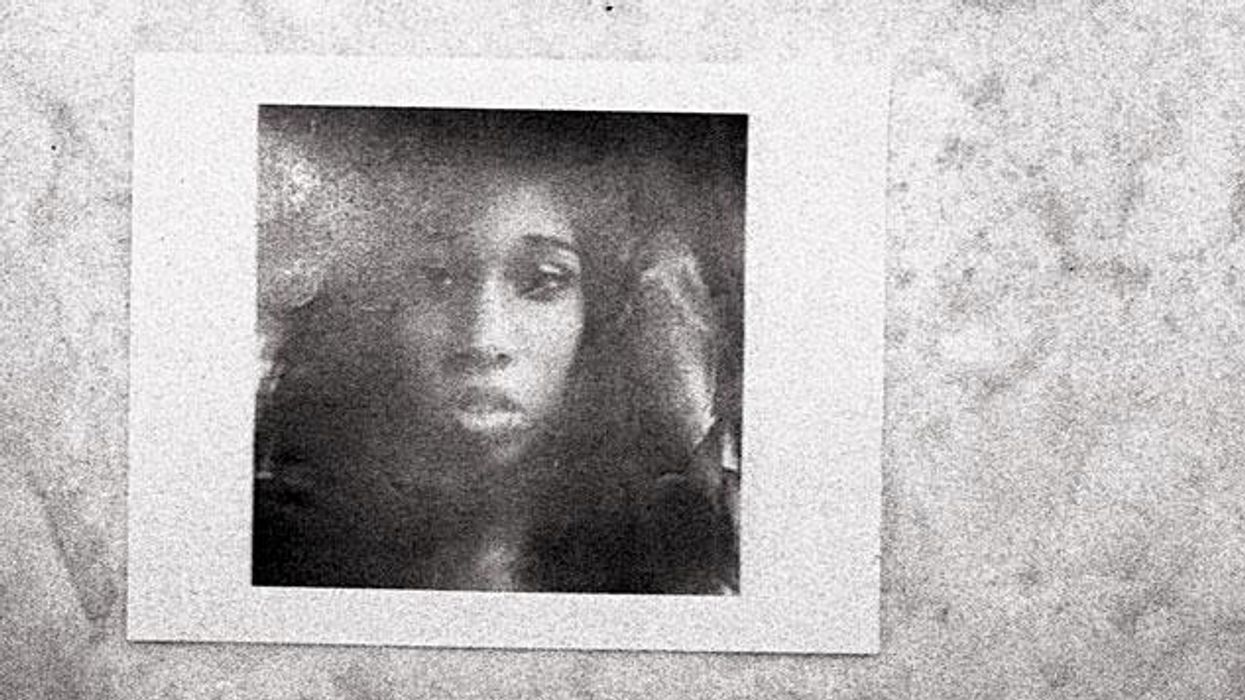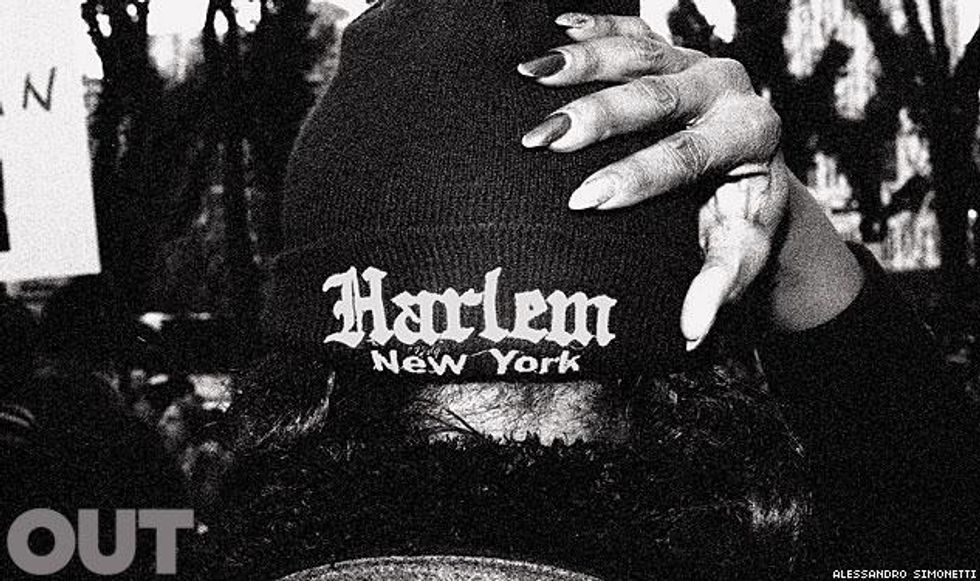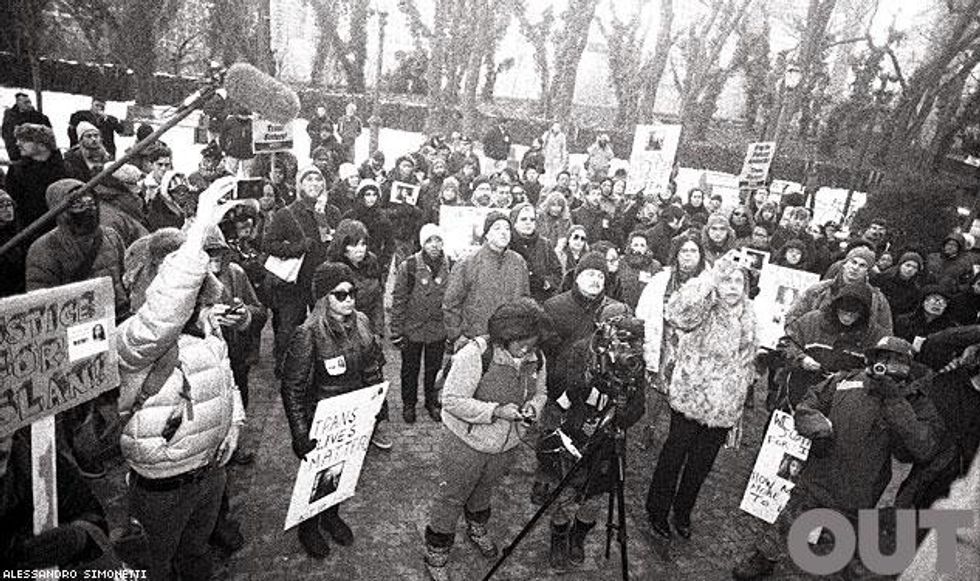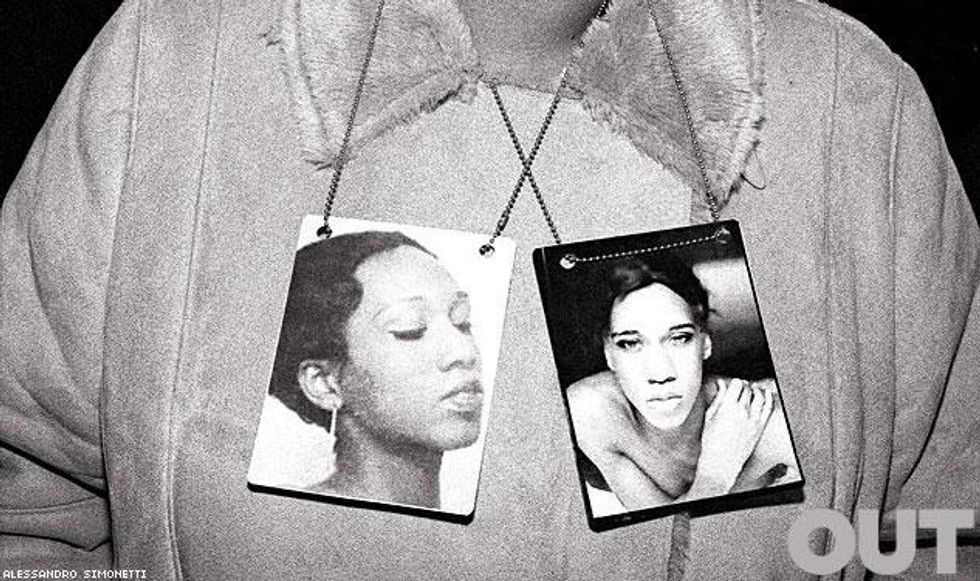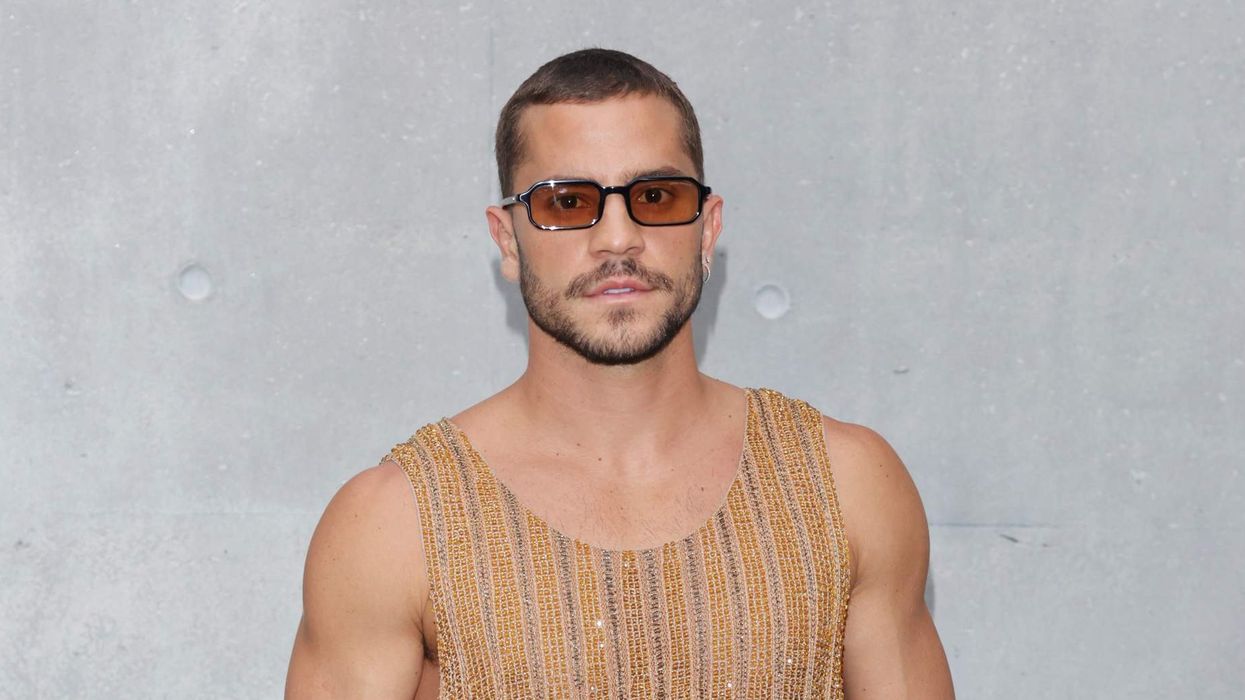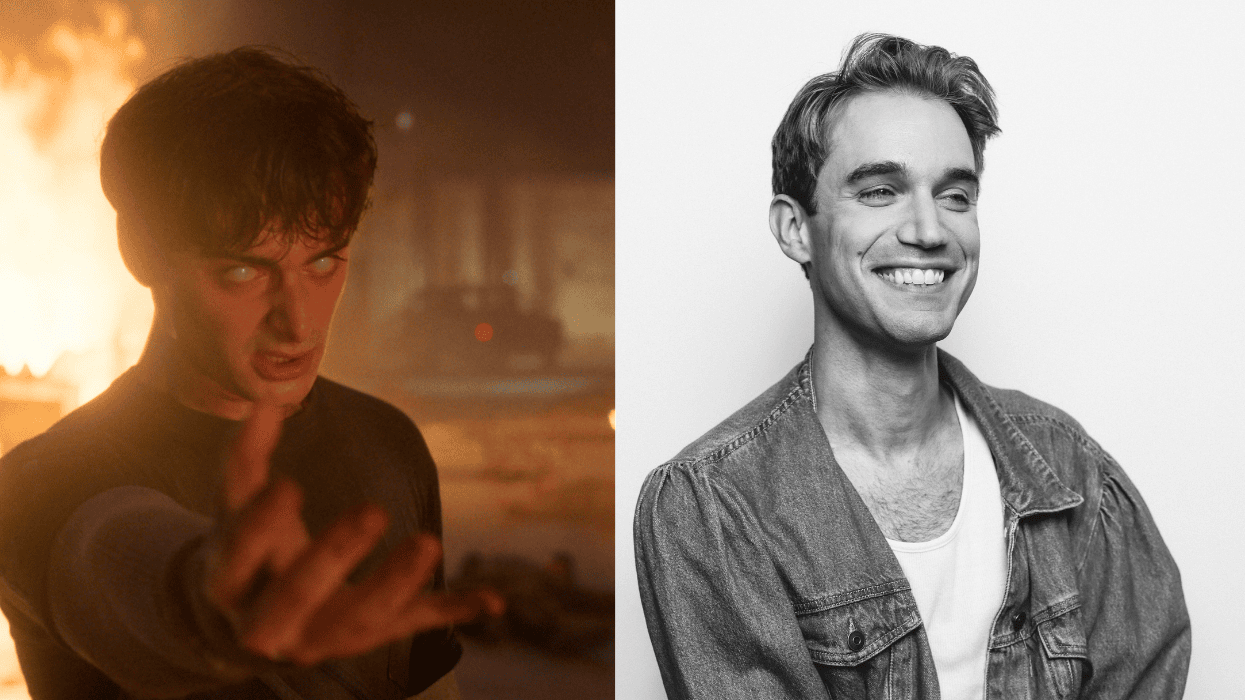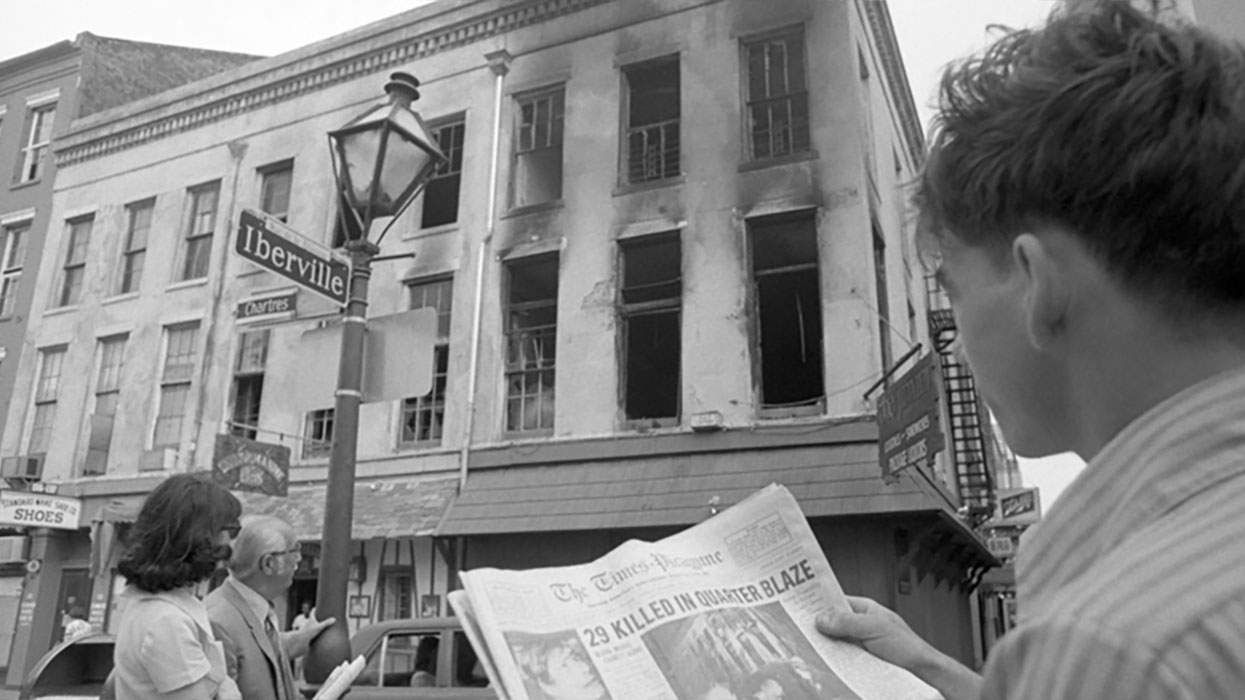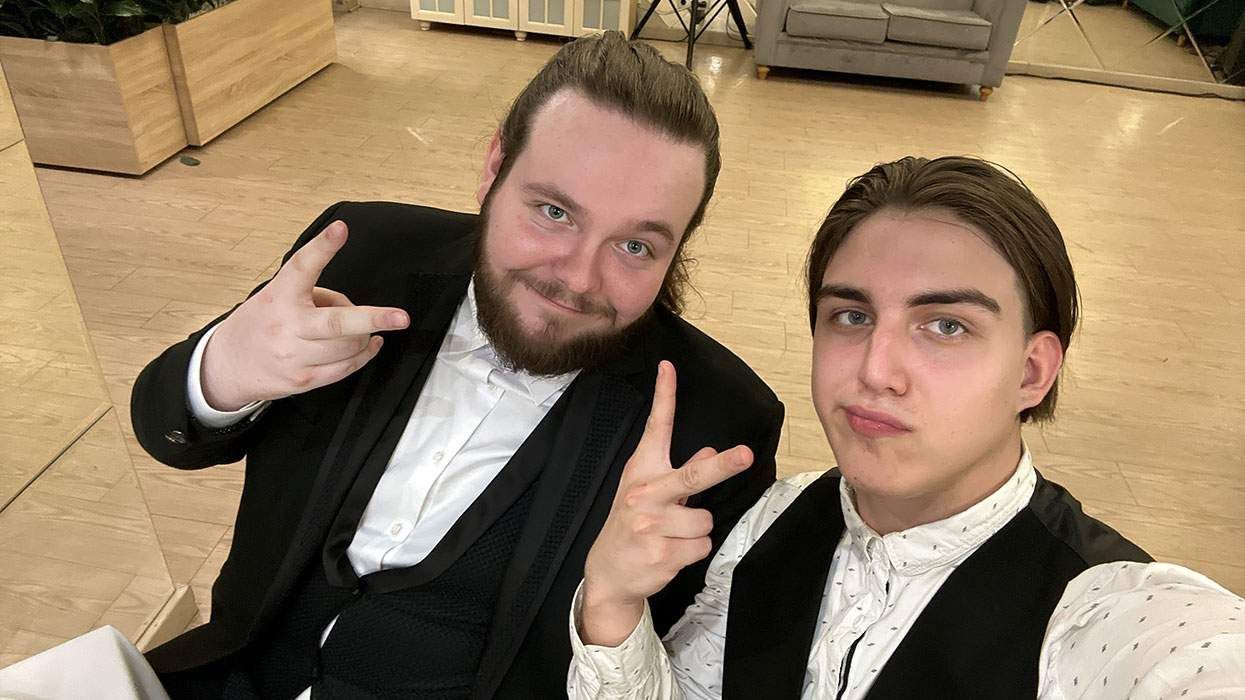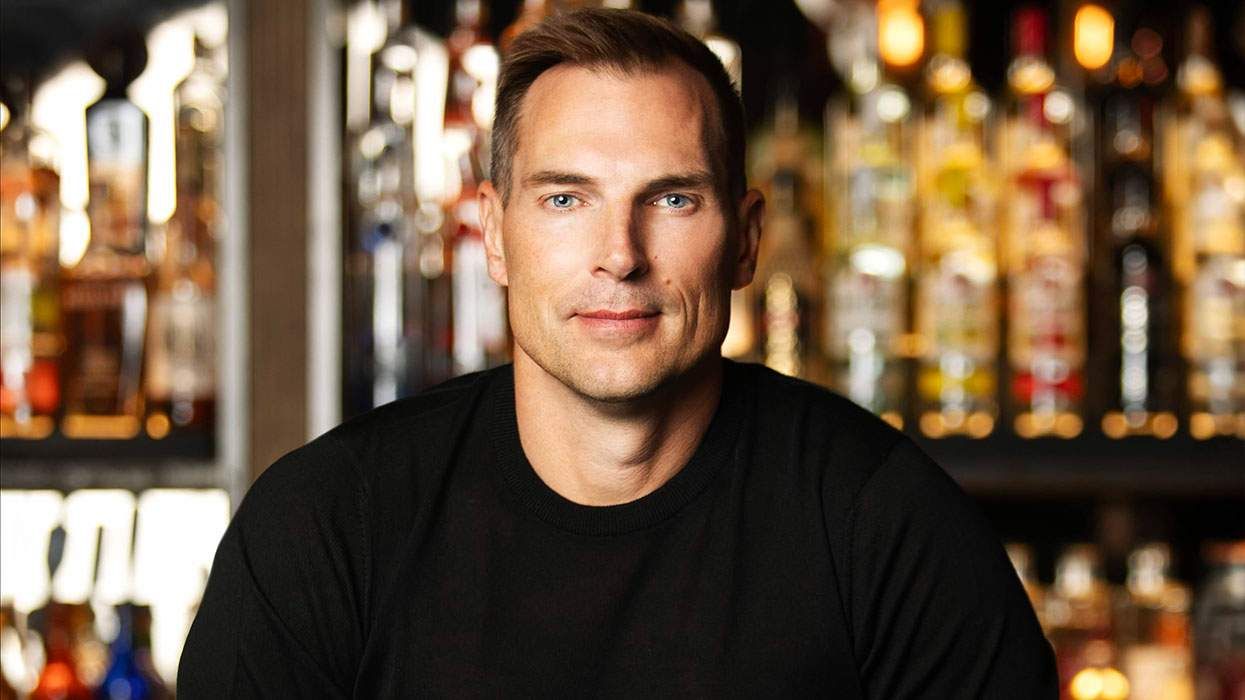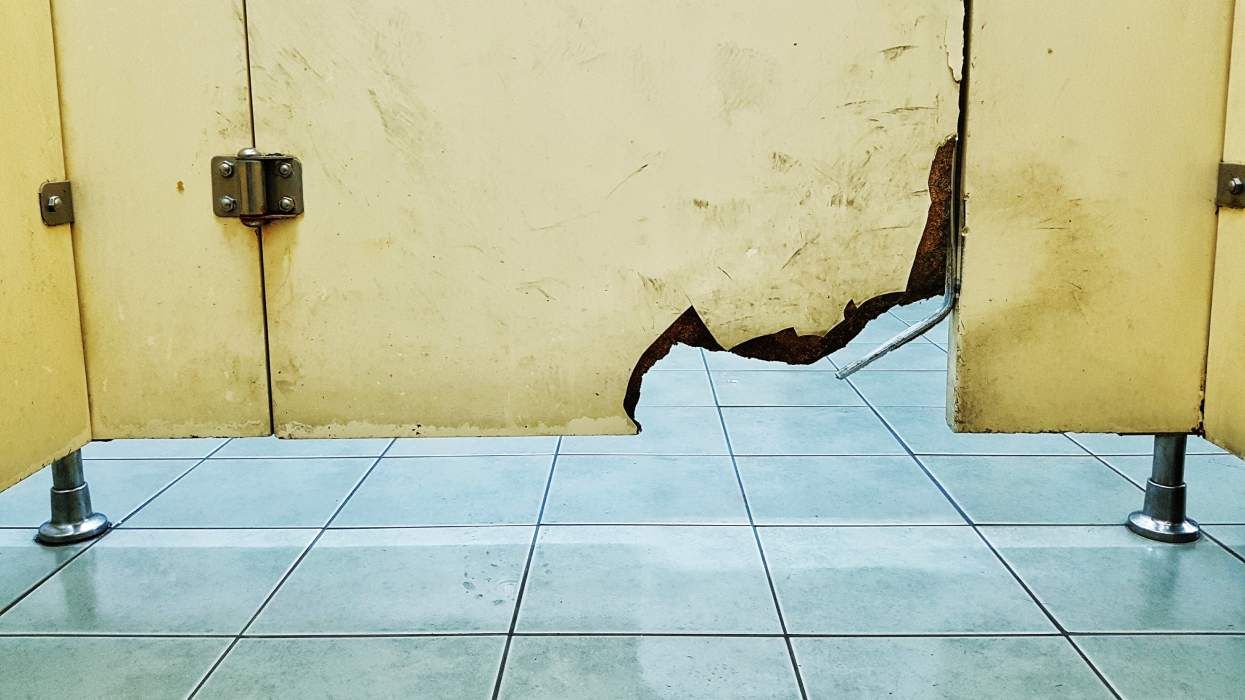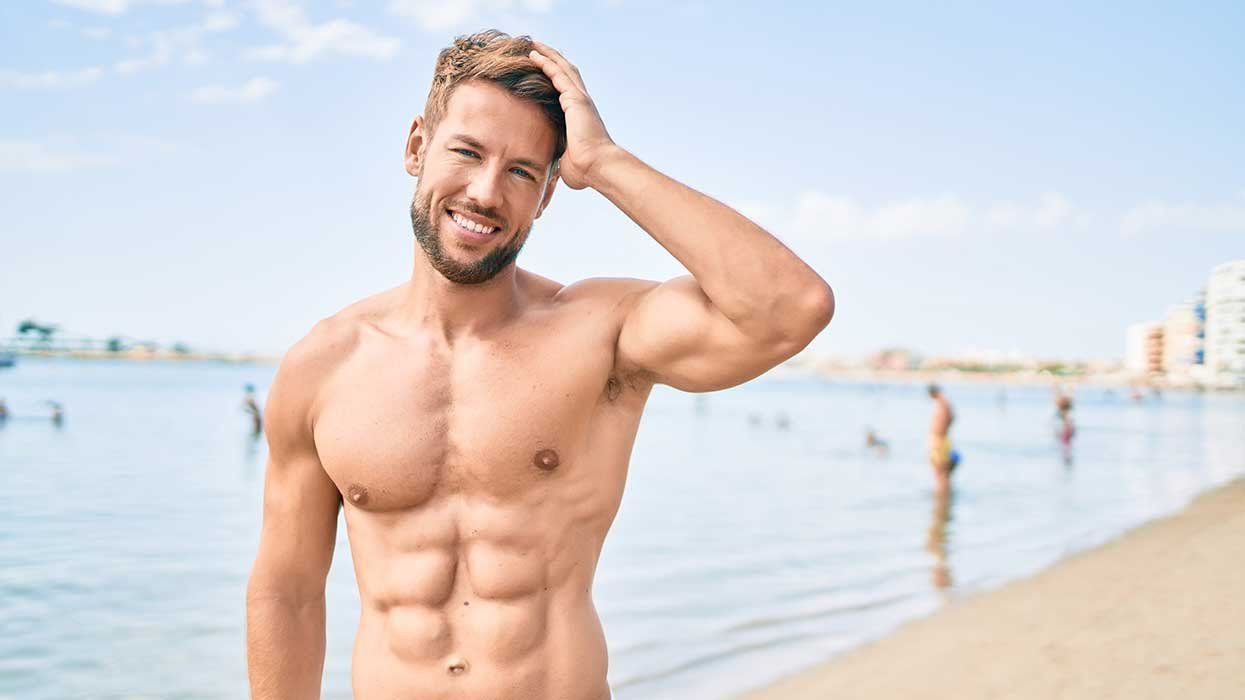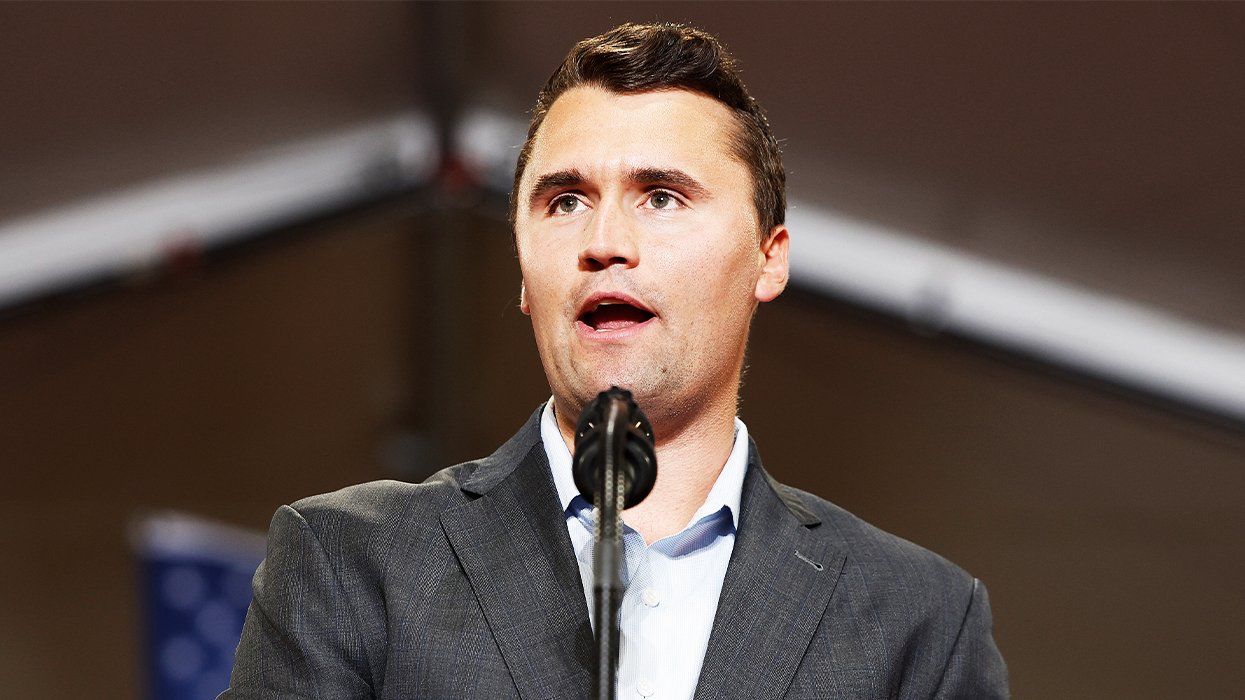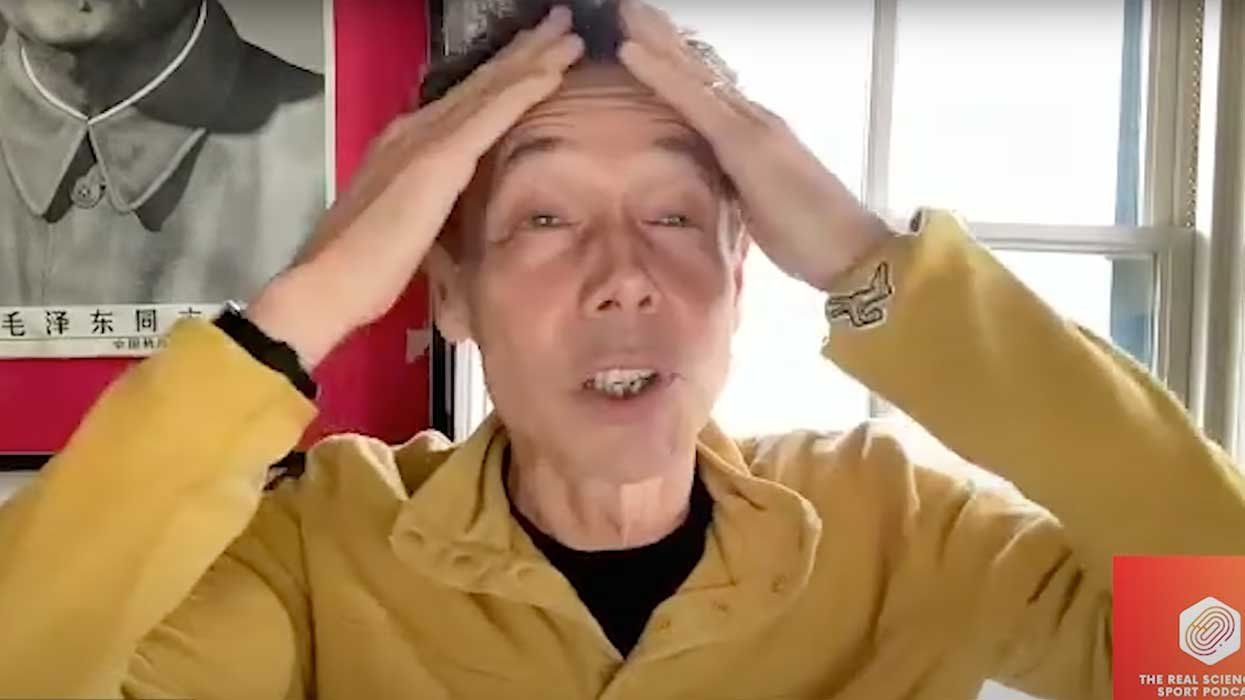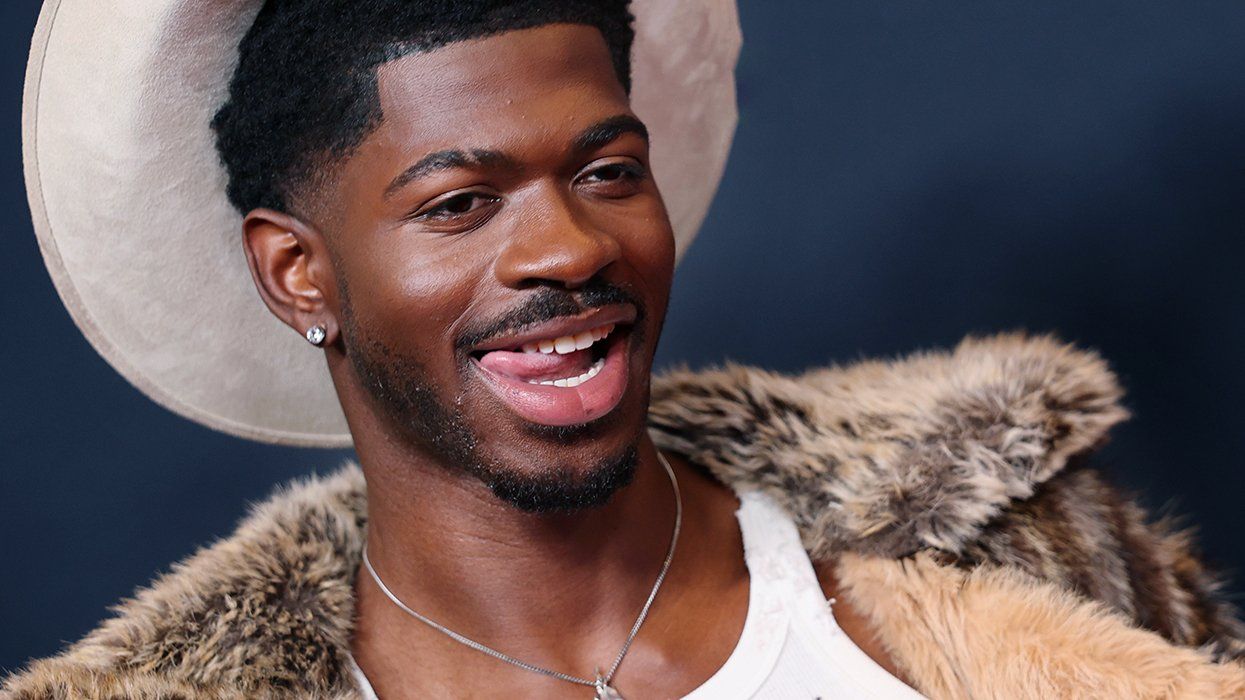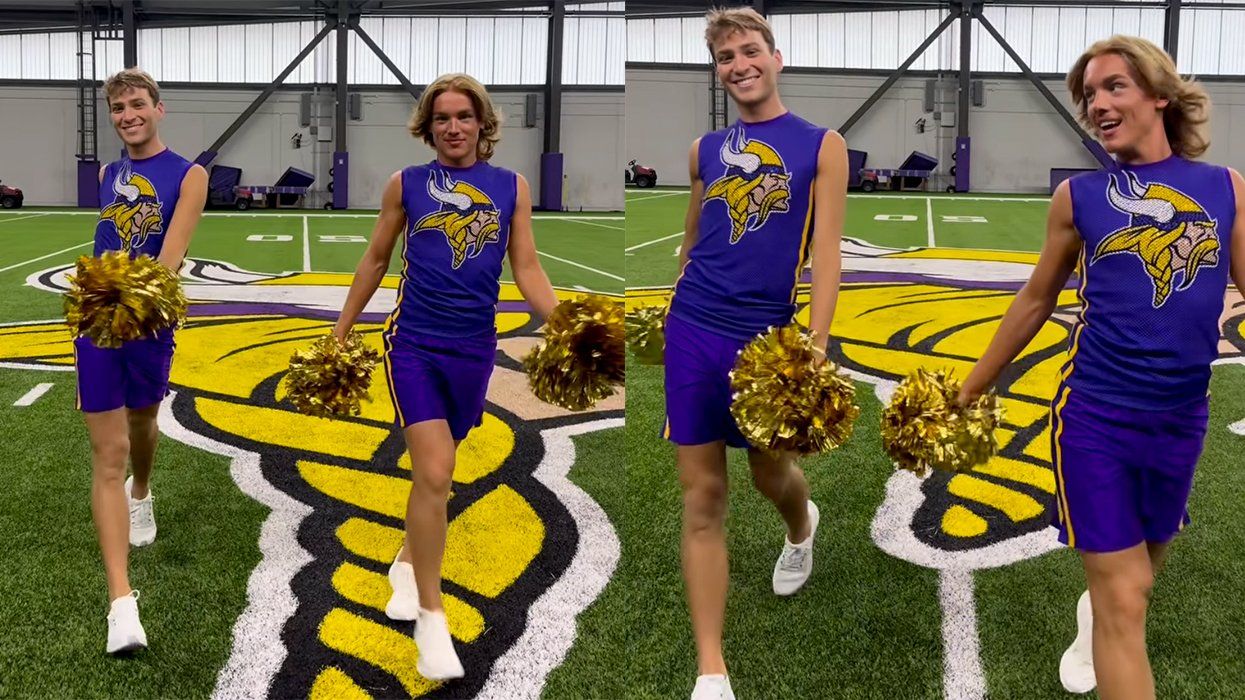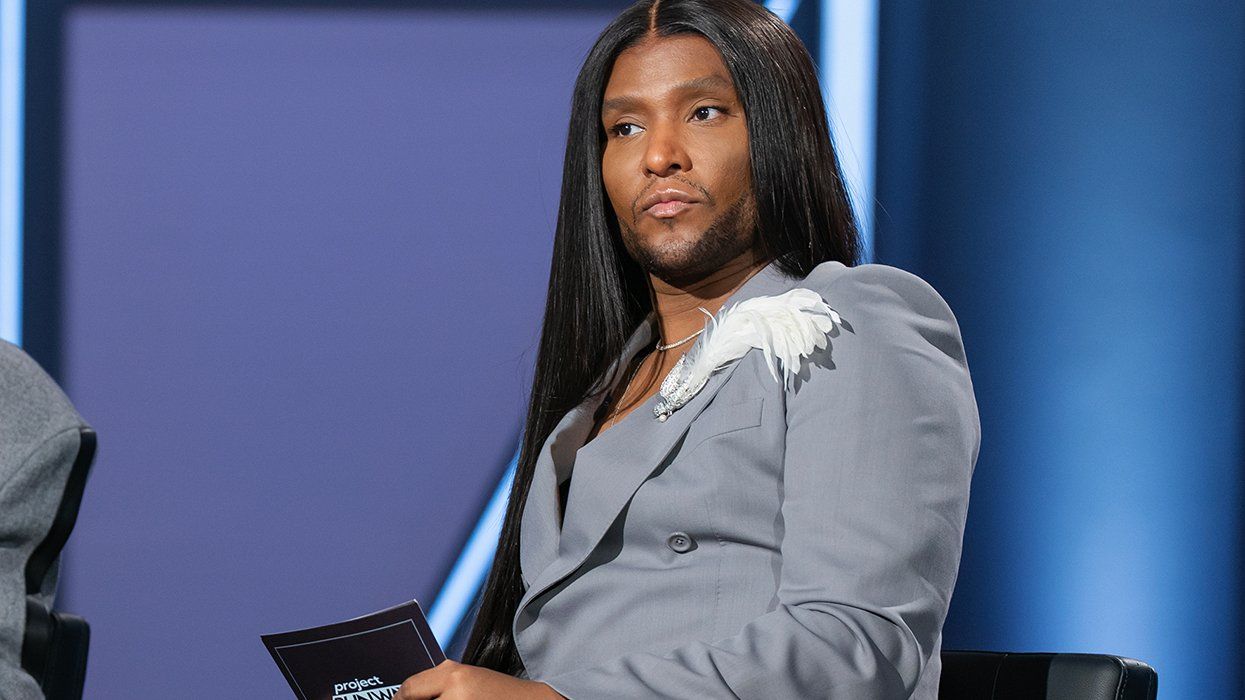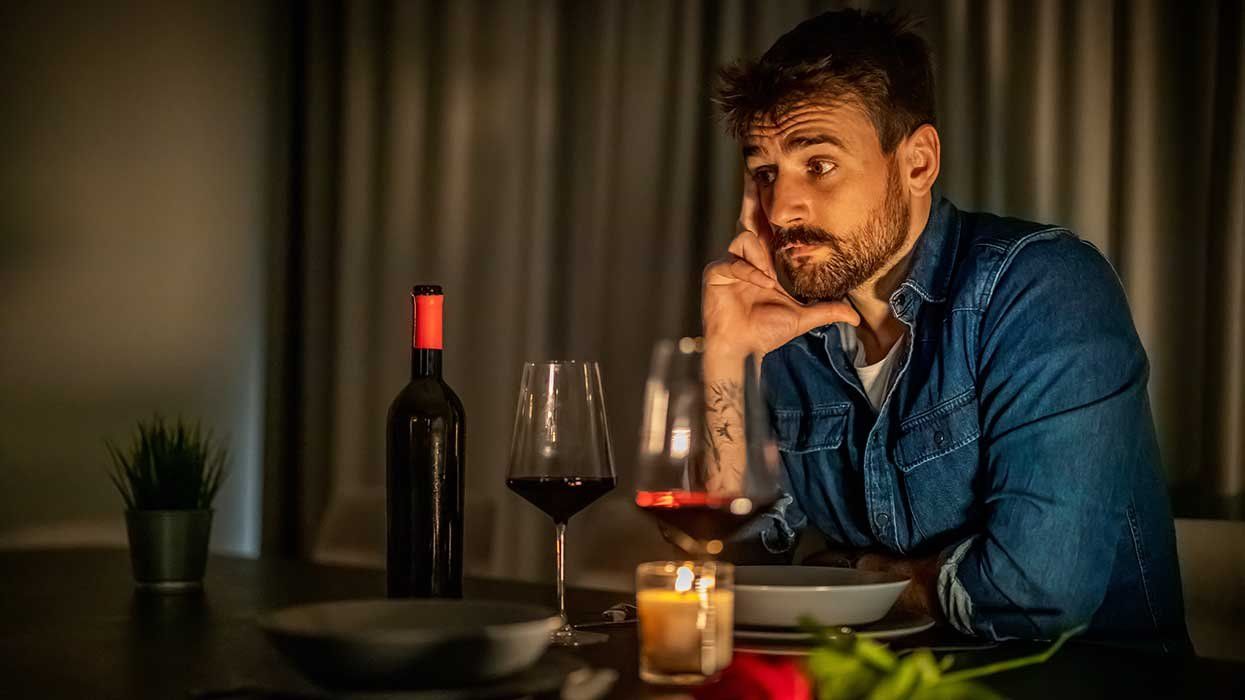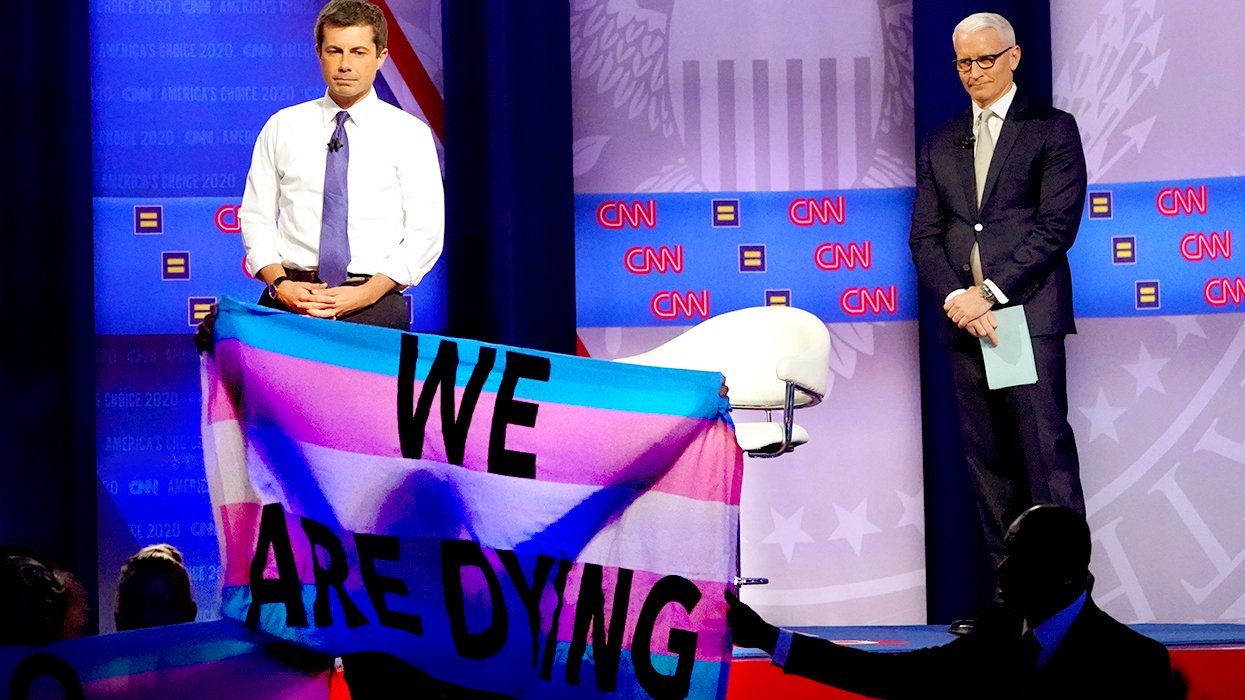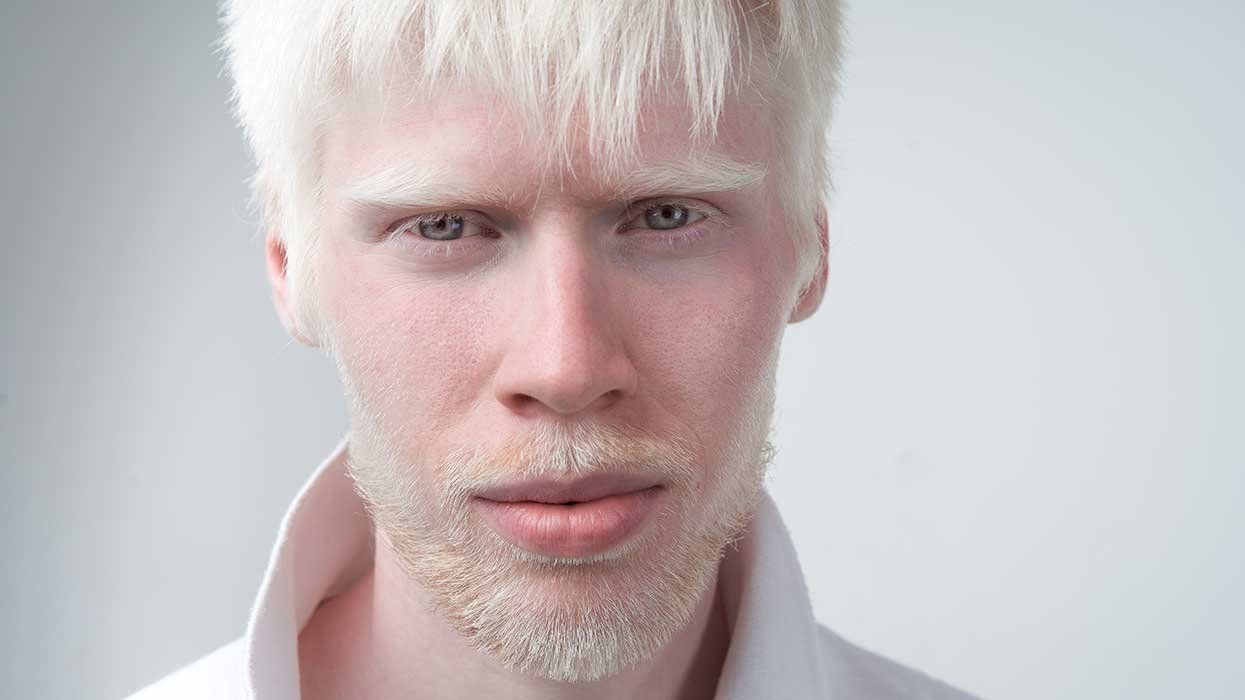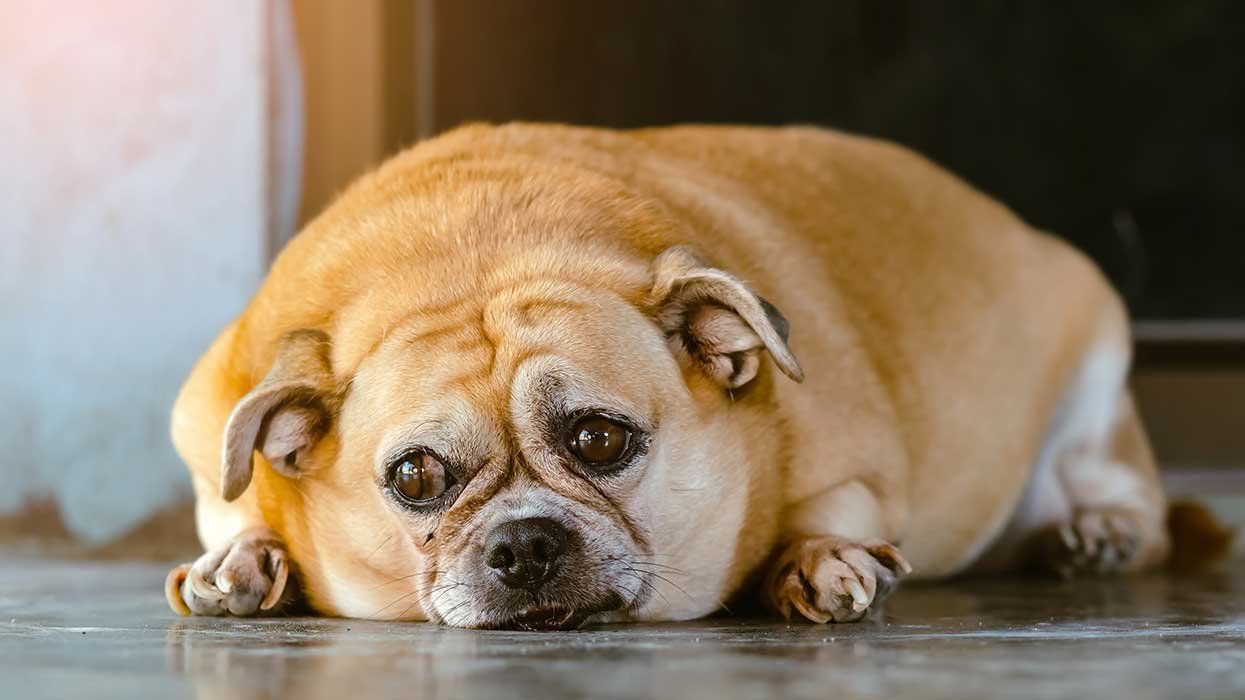Photography by Alessandro Simonetti
The weather in Manhattan on January 30 was bitter, frigid -- not the kind of day you go out into if you don't have to, least of all to a windswept plaza in the shadow of the bunker-like headquarters of the New York City Police Department. But that afternoon, a bundled-up crowd of more than 100 people, about half of them transgender women of color, massed there for more than an hour, holding signs that read "Transgender Lives Matter And Justice For Islan Nettles". In the crowd was Janet Mock, a former People magazine editor who was about to publish her memoir, Redefining Realness, about her life as a transgender woman. She was with Melissa Sklarz and Madison St. Claire, the trans women who were advocating for trans rights in New York City years before boldfaced names like Chaz Bono, Chelsea Manning, and Laverne Cox helped thrust the issue into the spotlight.
Suddenly, a woman in outrageous red cat's-eye sunglasses, a cobalt coat, pink scarf, and black tights came stalking toward the crowd, shouting, "Trans lives matter!" It was a local transgender actress Daisy Lopez. Her peers began whooping. Lopez looked at the wall of NYPD cops there to patrol the rally in their dark blue uniforms, expressions impassive. "You fucking saw it!" she screamed at them. "Everybody saw it! Do your jobs!"
"Do your jobs!" the crowd started chanting. Despite the freezing cold, the rally was on.
Its ostensible purpose was to demand a full account and update from the NYPD and the office of New York County District Attorney Cyrus R. Vance Jr. on the investigation into the death of Islan Nettles [pronounced elan], a pretty, young, transgender woman from Harlem. Shortly after midnight on August 17, 2013, Nettles, finally in possession of her own apartment after periods of homelessness and newly embarked on a career in design, was walking with friends in Harlem when what apparently began as flirting with a group of young men took a bad turn as the men realized the women were transgender.
According to several accounts, one young man struck Nettles to the ground and beat her unconscious. Some accounts say that police, summoned from a nearby station by Nettles's friends, had to pull the young man off of her. Nettles was taken to Harlem Hospital in an ambulance and declared brain-dead four days later.
A young man, 20-year-old Paris Wilson, was immediately arrested for the attack and released on $2,000 bail. The crime was initially classified as assault, a misdemeanor. That charge was dropped in November, even as authorities said they were still investigating the beating as a possible homicide and hate crime.
Since then, there have been few announcements from authorities on the case, although in private visits, they have told trans activists they are aggressively pursuing it. In an off-the-record call, a DA's office staffer told me that much of the community's story about the attack and the police's mishandling of the case is inaccurate. For example, the staffer said, it appeared that the attacker had not beaten Nettles repeatedly but had struck her once, hard enough for her to fall down and incur a concussion on the sidewalk.
The staffer also told me that the DA's office was pursuing the case every day, but that bringing someone to trial depended largely upon certain witnesses -- with whom the DA has met -- being willing to surrender more information.
But that Thursday in late January, trans activists and their cisgender (where one's experience of gender aligns with their born sex) allies from groups such as ACT UP were out to demand that investigators bring them up to date. Passing around a large red megaphone, they shouted questions at the cops: Why did it appear they had not taken a DNA sample from Wilson at the scene of crime, though they reportedly had to pull him off of Nettles? (The DA staffer told me that there was no blood on Wilson's knuckles.) Why weren't all witnesses detained and questioned? Why was there no police follow-up on Nettles while she was in the hospital? Why had no footage of the crime surfaced, even though it had occurred across from a police station covered in security cameras?
"Why didn't a detective come to the hospital?" demanded Delores Nettles, Islan's mother, through the megaphone. "A social worker there had to call the DA's office. I said to them, 'Half of my child's brain is hanging out of her head and you can't tell me anything?' "
Yet, at the rally, beneath the demand for answers about Islan Nettles, was a deeper anger. As Mock put it to me when the rally was breaking up, "[The death of ] Islan isn't the first death of a transgender woman of color, and she's not going to be the last. I'm at risk every day myself just walking the streets of New York City. We all are."
STAGGERING STATISTICS
Mock is right. Tragically, the statistics backing her statement are staggering: According to a report last year from the National Coalition of Anti-Violence Programs, which tracks and fights attacks on LGBTQ people, half of all fatal hate crimes committed in the United States in 2012 against LGBTQ people were against transgender women, and 73% of all homicides were of people of color. The same report found that transgender women of color were dramatically more likely to experience police violence or discrimination. According to the group Transgender Day of Remembrance, there have been 85 murders of transgender people in the United States between 2008 and 2013. And those are just the reported cases.
Above: The rally on January 30, 2014, in New York City
When The Advocate, our sister publication, published a memorial to the 13 transgender people reported murdered in the United States in 2013, all but one, it appears, were women of color. Additionally, "Injustice at Every Turn," a landmark 2011 national survey of more than 6,000 transgender people that documents widespread discrimination at all levels, found that 61% of respondents had been physically assaulted.
These statistics are the flip side to an otherwise upbeat cultural narrative in which transgender people, and perhaps trans women in particular, are gaining legal rights, public understanding, and media popularity. The truth is, every week that you hear, say, that chic retailer Barneys New York is doing an all-transgender ad campaign, or that California is letting trans students choose the gender of the sports teams they play on or the bathrooms they use, a transgender woman -- usually of color -- is murdered or assaulted somewhere in the United States.
Often, the murders occur in places that don't have hate-crimes legislation. Very often, the murders go unsolved or uncharged. And often, though this is decreasing, the victims are "misgendered" by the media or law officials, being called he or by their birth names. Last year, when a young transgender woman named Cemia Acoff was found stabbed and at the bottom of a pond with a cement block tied to her, the Cleveland Plain Dealer referred to her by her male name and to her salvaged body as that of an "oddly dressed man."
For urban gay men, especially white or middle-class ones who live in relatively safe gayborhoods, it can be a mental leap to realize that the stylish gal sashaying down the street so confidently, the one we might affectionately call a "tranny," lives with some level of fear for her life the moment she leaves her apartment.
Just take New York's Laverne Cox, the poised, eloquent transgender activist and actress who found fame last year playing transgender inmate Sophia Burset on the Netflix series Orange Is the New Black. When I saw her on TV recently, tactfully but firmly telling a flummoxed Katie Couric why it was disrespectful to ask transgender people about their genitals, I remembered interviewing her seven years ago for The Advocate during a roundtable to discuss the exclusion of transgender people from a federal LGB nondiscrimination bill (which tanked anyway).
I'd asked her when she felt safe. "In my house," she'd said. "Nowhere else."
Now on a major nationwide college speaking tour about transgender rights and awareness, she took time to recount to me the time when, shopping for a scarf near her apartment in midtown Manhattan, she'd passed a group of young black men who made anti-trans slurs. One of them kicked her. Shocked, she immediately went into a store and called the police, who told her that since she wasn't badly hurt, the incident was merely harassment, not assault.
Above: The rally on January 30, 2014, in New York City
Cox says that cisgender people can't understand the toll that such physical and verbal abuse takes on trans women, who have high rates of depression, anxiety, and suicidal thoughts and attempts. "People have told me on the subway that they thought I should die," she says, her voice rising in distress even as she recollects. "A man passed me a few months ago and said to me, 'You look like you could fight like a man.' Now, with the TV show, fans will come up to me on the street with love. But it's traumatizing. I'm hyperaware that my life is in danger because of who I am."
Cox's situation is echoed by that of Cristina Herrera, a transgender Latina who heads up the Gender Identity Project, which provides counseling, referrals, and support groups for transgender and gender nonconforming people at New York's LGBT Community Center. Herrera says she's been assaulted several times. Once, just like Nettles, she was walking down the street in Jackson Heights, her neighborhood in Queens, when three men taunted her. One of them knocked her to the ground.
"It took me a while to regain confidence," she recalls. "I felt very impotent. I wish I could've prevented it and defended myself. Even now, years later, there's a little voice in my head telling me to be extra-cautious wherever I go. It's a sad way of living, and incidents like Islan's just reinforce our paranoia and the feeling that we could be next."
According to Cox, violent transphobia is rooted in an irrational rage. "People think that trans women deserve violence because of this ridiculous, bullshit idea that we're in herently deceptive," she says. "That we're not who we say we are, that we're fake women, and fakeness needs to be called out. Just read any story online about a celebrity caught with a trans woman. People say things like, 'If I ever found out that my girl was trans, I would beat her ass.' "
Cox is currently trying to fund a documentary called Free CeCe, about CeCe McDonald, a Minneapolis transgender woman who served 19 months in prison after fatally stabbing a man in self-defense during a transphobic attack. (In a sign that courts may increasingly be becoming sensitive to antitrans violence, she was, indeed, freed in January.)
PUSHED TO THE MARGINS
There's another reason rates of violence against transgender women of color are so high compared to LGBTQ people at large. A 2011 survey conducted by the National Center for Transgender Equality and the National Gay and Lesbian Task Force and summarized in "Injustice at Every Turn" found that many of them live at the complicated intersection of homophobia, transphobia, violence toward women, job, workplace and healthcare discrimination, racism, police harassment, and, on top of all that, poverty. Often, for lack of other options, they become sex workers in neighborhoods or in social networks that aren't safe to begin with. In some of the transgender murder cases of 2013, the women were not assaulted by strangers on the street but in private homes by lovers or acquaintances.
That was the case with Erycka Morgan, who'd served prison time but was in a post-prison job training program for transgender women at Rutgers University when she was murdered last fall in the New Brunswick, N.J., apartment she often used to shelter younger LGBT people -- a visiting acquaintance was charged with the crime. After years of ups and downs, she'd become a mother figure and a safety adviser to younger trans women, some of whom drifted in and out of sex work, according to Gary Paul Wright, founder of the African American Office of Gay Concerns, a Newark nonprofit where Morgan had pioneered a transgender program nearly a decade ago.
"Because of girls like Erycka, we changed our thinking about transgender people around here," says Wright. "It wasn't just doing drag, but their lives."
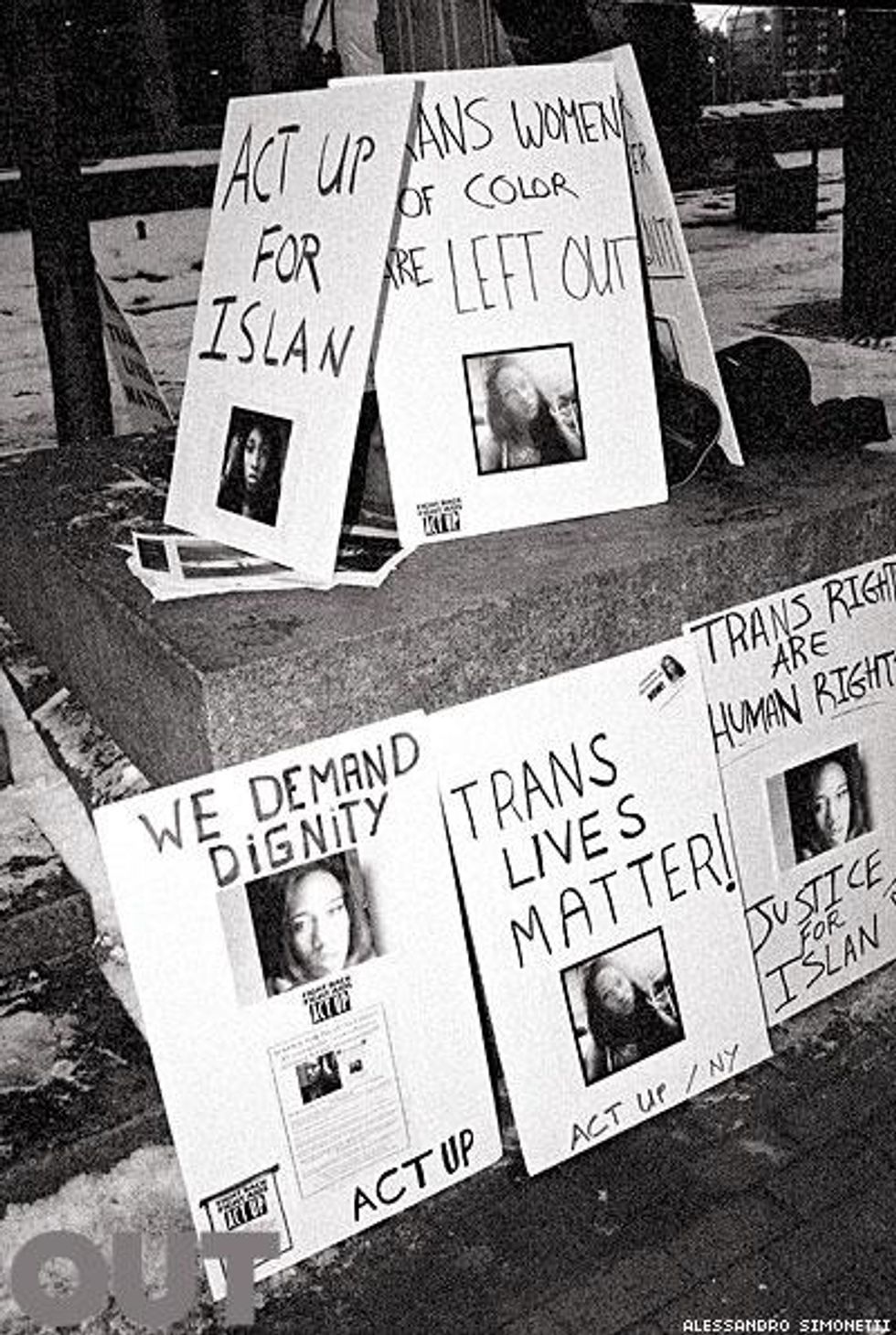
Such vulnerable lives are deeply rooted in socioeconomic insecurity, the landmark 2011 study found. Its respondents were nearly four times more likely to have an income of less than $10,000 a year than the population at large. Forty-one percent had attempted suicide, compared to 1.6% of the general population, with higher rates for those who'd lost a job due to bias, were harassed or bullied in school, were very poor, or had been physically or sexually assaulted.
The group had double the national rate of unemployment, with respondents of color at four times the rate. Ninety-percent said they'd experienced some kind of on-the-job bias or harassment. Nineteen-percent had been refused housing, and 19% had been homeless at some point.
Twenty-two percent had been harassed by police, and 19% had been refused medical care because of their transgender status. And crucially, because official identification is so important in every corner of life, only 21% had been able to update all their records to match their gender identity, while 40% who presented ID that didn't match their gender identity were harassed because of it.
"We're misgendered all the time," says Brooke Cerda, a transgender Latina who works with Herrera at the Gender Identity Project and who has been a key activist in the push to get officials to prosecute the Nettles case. "That's our fear. That we will die and everyone will forget who we are, and at the morgue, they'll see our genitals and call us a cross-dresser."
CHANGE AT ALL LEVELS
Can high rates of transphobic violence be reduced? Currently, a federal hate-crimes law, as well as laws in 17 states and in Washington, D.C., covers bias against gender identity. It's likely that over time, such laws will send a message that bias-motivated crimes may be punished more severely than others. But most trans advocates agree that aggressive investigation and prosecution of violent crime against transgender people itself sends a strong message. In the Nettles case, the DA staffer I talked to off the record insisted that this was the case. "We really want to get this case solved and we're moving forward on it," the staffer said, "partly because we've had a good record prosecuting crimes against transgender people in recent years."
But transgender advocates believe that change must be proactive in order to prevent these assaults from happening in the first place. "We need to teach more sensitivity and diversity," says Herrera. "Schools need to normalize this earlier so people see us as human, not as the freak or the hooker or the clown that the media looks to make fun of."
She said New York and other cities could benefit from efforts like a 2012 poster campaign sponsored by the D.C. government that featured real-life transgender Washingtonians saying such things as: "Please treat me the way any woman would want to be treated: with courtesy and respect." That campaign, as well as a city job-training program for transgender residents, was launched in the wake of a string of horrible attacks on transgender women in D.C. That trend in the nation's capital unfortunately continued into 2013.
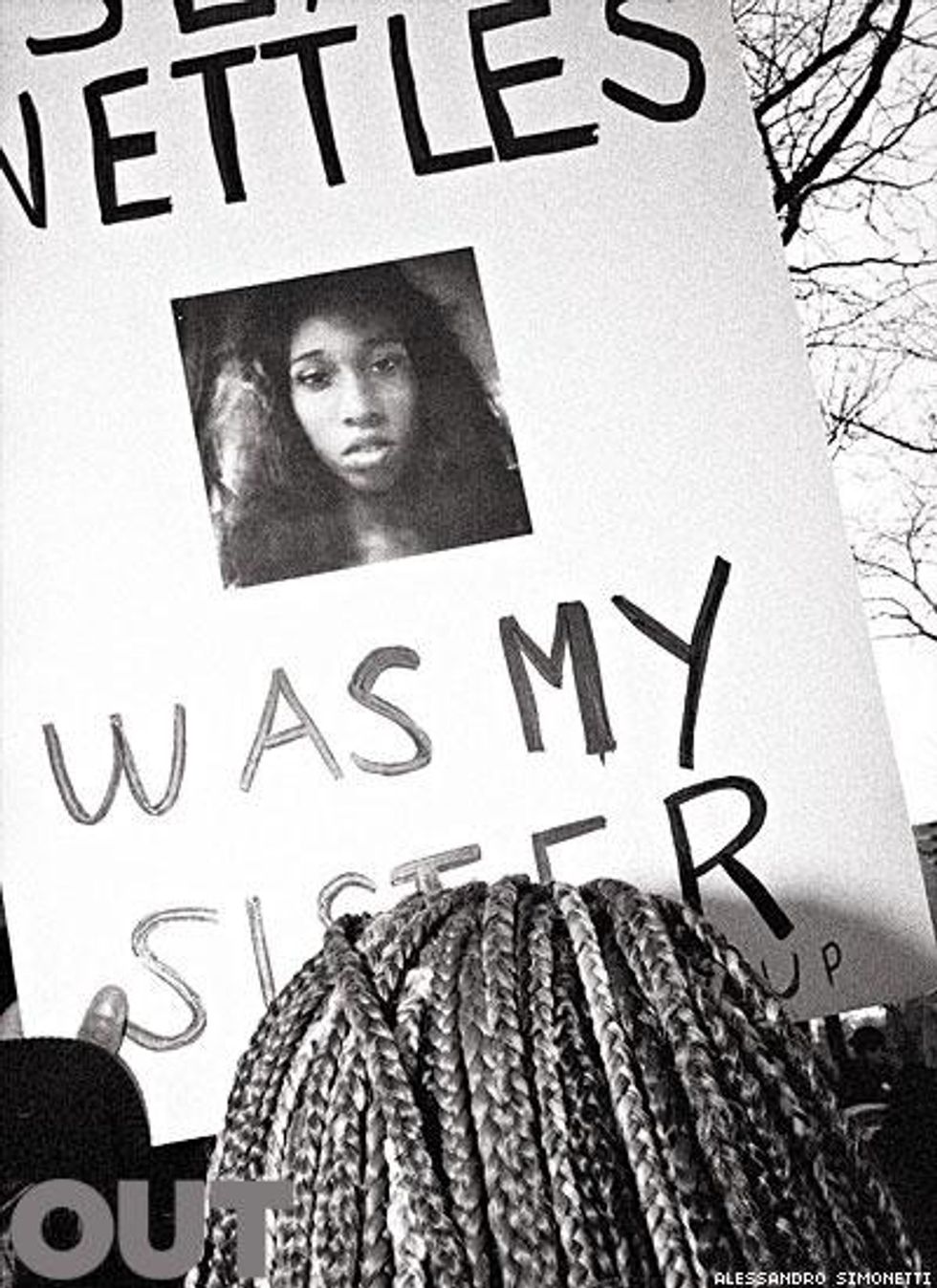
Several transgender women I spoke with for this story said they wished they had greater support from gay men. They pointed out bitterly that when Mark Carson, a black gay man, was shot to death last summer in the West Village by a man who'd been making homophobic taunts, 1,500 people turned out for his vigil and rally, whereas a few months later, Nettles's drew a few hundred, mostly from the transgender community.
"We're here for more than your entertainment," Cox says. "We're great and courageous people who have the audacity to be seen, yet you treat us like we're a joke. And I say that to my gay brothers with love. Please bring more transgender folks and people of color to your table, and really listen to us. Because we really need the resources you have, and your love and support."
Perhaps at the frigid January rally demanding justice for Nettles, such deeper bonds between gay men and transgender women were emerging. A primary organizer of the event had been ACT UP, which still comprises primarily gay men. "It's time for the LGB to give back to the T!" shouted ACT UP's Terry Roethlein, earning whoops of assent.
Yet it was clear from the speaker lineup -- which included the young firebrands Lourdes Ashley Hunter and Daniella Carter from the Trans Women of Color Collective of Greater New York -- that transgender women were leading the call that day. It was a far cry from an August vigil for Nettles, which rankled transgender folks because the speakers were almost completely cisgender and more than once referred to Nettles as "he."
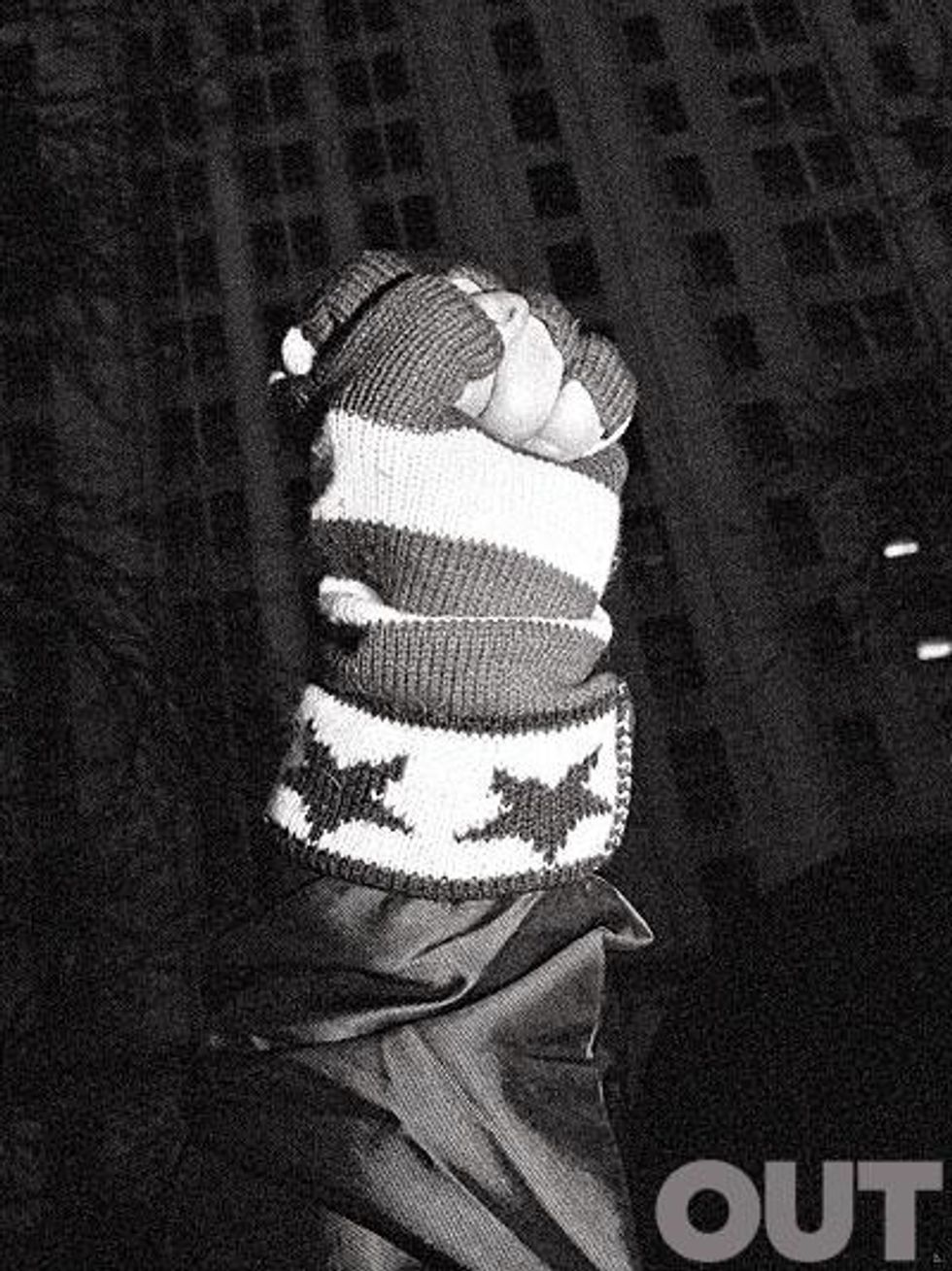
The crowd went respectfully silent when St. Claire -- a busty, brassy, blondmaned longtime survivor of New York's mean streets for trans women -- took the big red megaphone. "I've lived through more murders than you can count," she told the crowd.
She paused, before roaring: "Join organizations! Singly, they're not listening to a word we're trying to say. You're still looked at as disposable, people. Garbage. And the only way to change that is to band together and have your voices heard."
In the silence that briefly followed, it was as though you could hear years of pent-up emotion -- fear and stigma, pride and rage. And as Nettles's surviving sisters turned to face the wall of mostly male cops who ringed the rally, it seemed unlikely they were going to disperse fearfully back into the shadows of the night any time soon.


